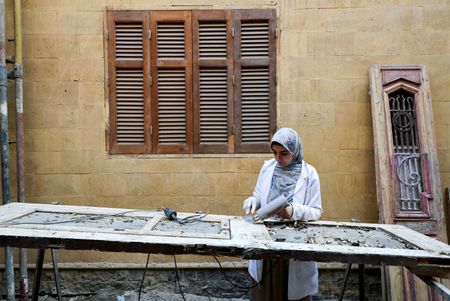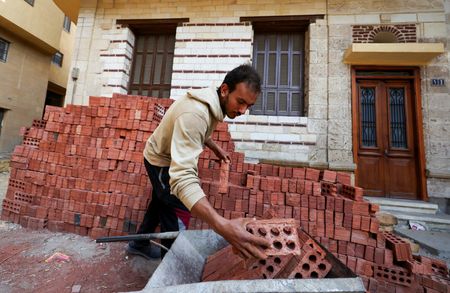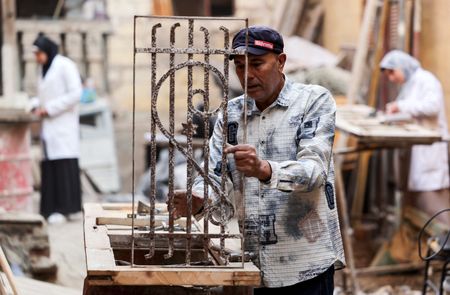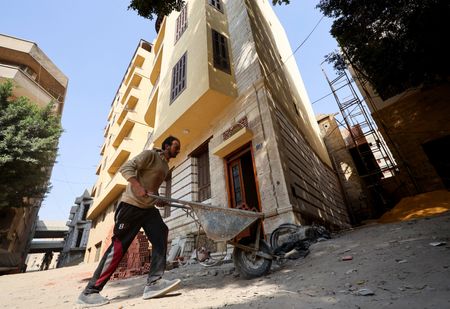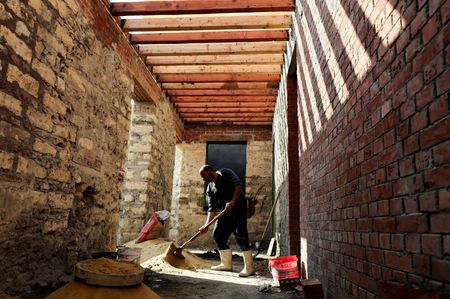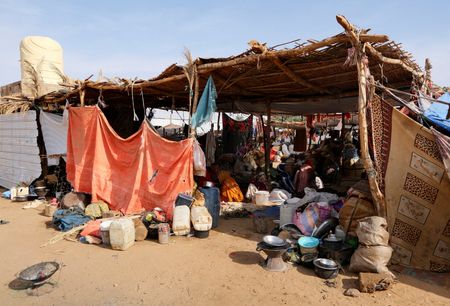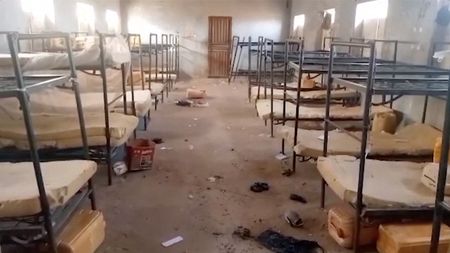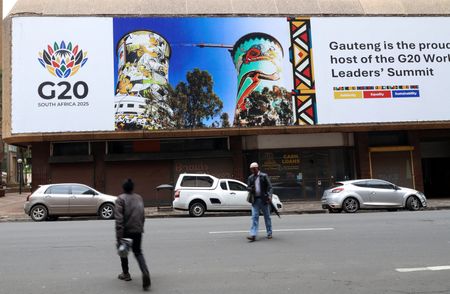By Patrick Werr
CAIRO (Reuters) -Egyptian restorers are reconstructing a dilapidated neighbourhood in Cairo’s historic centre, dismantling houses and then rebuilding them with materials from the old structures in a model they hope can be applied to other districts.
The Darb al-Labbana neighbourhood is nestled on a slope directly under Cairo’s more than eight-century-old citadel, a prominent landmark built by Muslim general Saladin, and abutting the back of a historic hospital complex. But in recent decades it had become largely uninhabitable.
The street pattern has remained little changed for centuries. The narrow lanes and alleys followed the same paths as they did in a map drawn up by French cartographers during Napoleon Bonaparte’s occupation of Egypt in 1798-1801.
Many of the existing houses, built more than a century ago on unstable surfaces, were too small by modern standards and lacked plumbing and other infrastructure.
The aim of the restoration plan was to build liveable homes, while keeping the original street plans and facades in place. Foundations were strengthened and new sewage, plumbing and electricity were installed.
“It’s a mini, modern version of the old,” said Nairy Hampikian, an architectural engineer who advised on the project.
The government has been tearing down buildings in other dilapidated areas, and Hampikian has been trying to show that there is a way to preserve them instead.
ANCIENT SITE
The Darb al-Labbana neighbourhood was part of the original endowment, or Waqfiya, of the Bimaristan of al-Mu’ayyid, a hospital built in 1420 A.D.
The conservationists spent 2021 and 2022 documenting the buildings in the neighbourhood’s narrow lanes and alleyways, inside and out.
“Fifty percent of the buildings were completely destroyed. Just heaps. Another 20% were half destroyed,” Hampikian said. “The remaining buildings were not liveable.”
Residents were given three choices: move to a new apartment provided elsewhere, accept money to vacate, or accept money to rent a place to live temporarily until the restored apartments were ready.
In 2023-24 restorers began dismantling the buildings, removing the stones, numbering them, then making new structures, many with their original facades.
The project rebuilt 23 completely destroyed buildings and constructed another 15 atop those that were only partly destroyed. Of the 102 families who lived in the area, 52 have decided to return when the project is due to finish next year, 20 of them to their same address.
(Reporting by Patrick WerrEditing by Frances Kerry)

